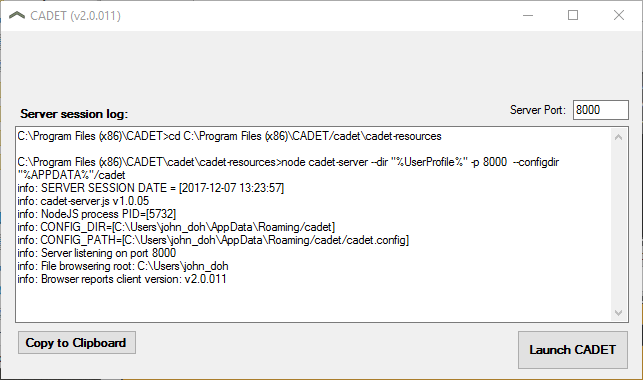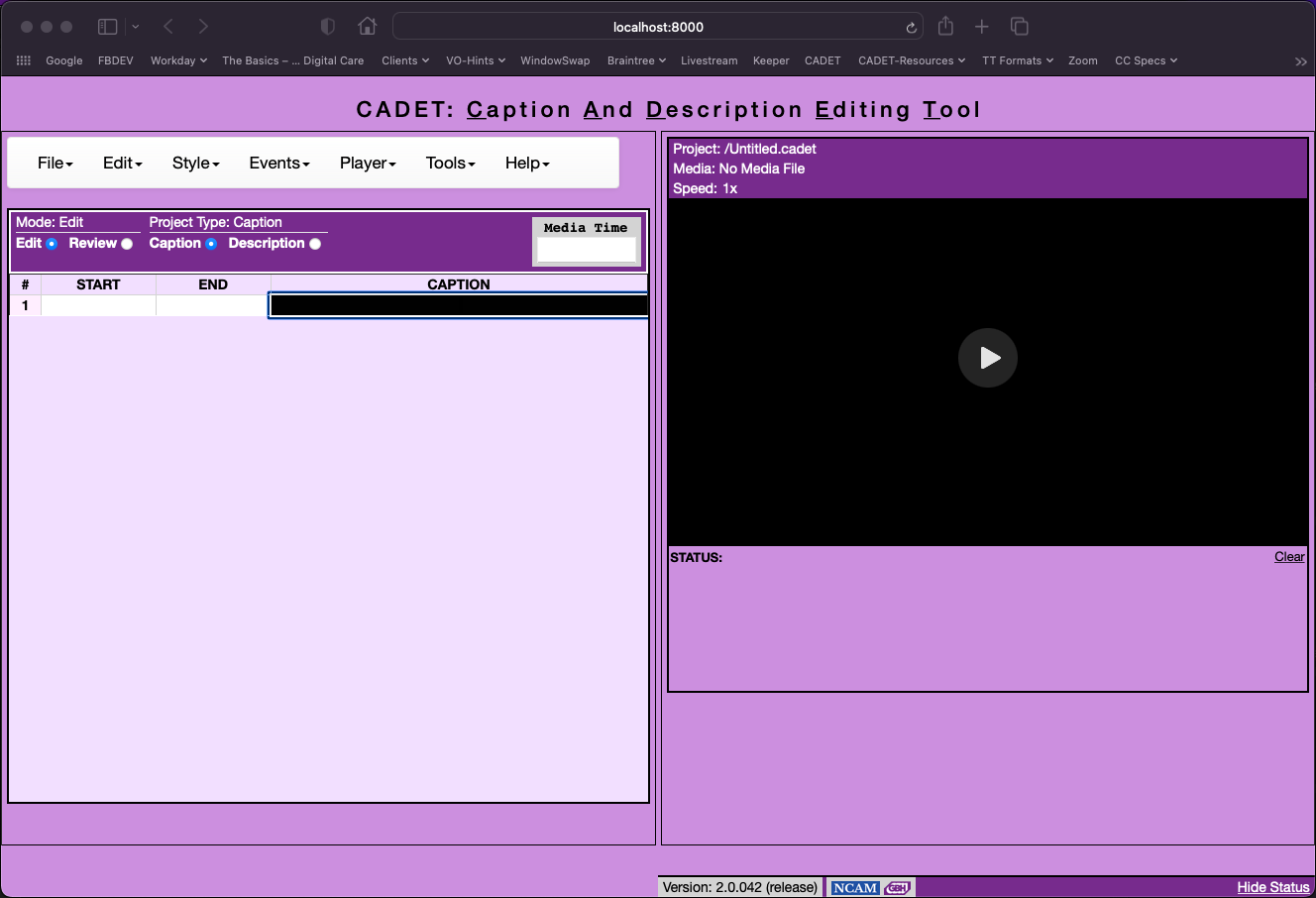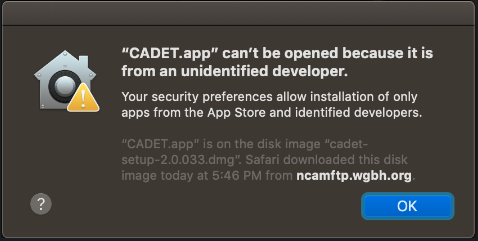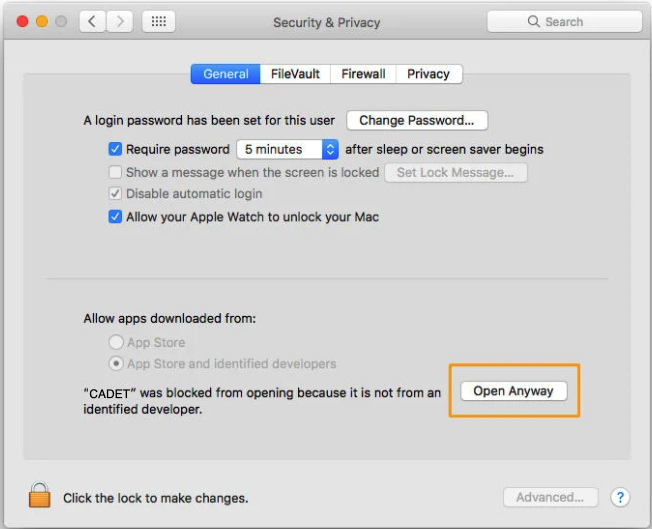CADET requires two components to be downloaded and installed:
- Node.js, which provides a local Web server on your computer
- CADET itself
Download and install NodeJS [Required]
- Download and install Node.js.
- Download the most recent LTS (Long-Term Support) release for your computer.
- Make sure to match your operating system (Windows or Mac) and architecture (32-/64-bit).
- After running the Node installer, you can verify that the installation was successful:
- Open a Command/DOS window (if running on Windows) or a terminal window (if running on Mac) and type "node --version" (no quotes). A message should appear with a version number (e.g., v6.10.3).
Download and install CADET [Required]
- Download CADET
- Mac: select the link for the latest Mac installer. After it downloads, double-click on cadet-setup-[version number].dmg. When the image mounts, drag the CADET application to your Applications folder. You can place a shortcut to CADET in your dock if you'd like.
- Windows: select the link for the latest Windows installer. After it downloads, double-click on cadet-setup-[version number].exe. When the installer runs, accept all of the defaults (or specify a new installation location). A CADET shortcut will be placed on your desktop.
- Linux: select the link for the latest cadet.zip. After it downloads, unzip it, placing the "cadet" directory somewhere where it will be writeable (by default CADET's preference file is placed in the "cadet" directory tree.
Note: If you are installing a CADET update, please be sure to QUIT all previous instances of CADET before installing and running the update: from within CADET, open CADET's File menu and choose Quit.
Note: There is an infrequent error occurring currently when loading media that causes CADET to crash on both Mac and Windows. Steps to fix this are:
- Start CADET
- Go immediately to
- Save even though you haven't changed anything
- Continue as normal
Run CADET
On Mac
Use the double-clickable application you installed above.- Double-click on the CADET application, and CADET will open in your default browser.
On Windows
Use the double-clickable application you installed above.- Double-click on the CADET shortcut, and CADET will open in your default browser.
On Linux
Launch from a terminal window.- Open a terminal window.
- Change directory into cadet/cadet-resources directory (assuming it's in your home directory):
cd ~/cadet/cadet-resources
- Run the CADET server:
node cadet-server --dir ~
- CADET server will launch your default browser, pointing to the server. If not, launch a browser and navigate to:
http://localhost:8000
When you open CADET on Windows or Mac OS, a launcher will briefly appear on the screen and then will run in the background, with output similar to that shown below:

Under most circumstances, you will not need to interact with the launcher.
The launcher starts up the CADET web application in your default browser, and it will look something like this:

When you are finished using CADET, quit the application by choosing CADET's menu and selecting . This will afford you the opportunity to save any unsaved changes to your project. Do not simply quit the browser, nor should you quit CADET by closing the CADET launcher. Doing so will display a dialog that warns you that all unsaved changes will be lost.

When you quit CADET, the launcher will automatically close. To open CADET again, simply double-click on the desktop shortcut.
Common Installation Errors
- Forgetting to install Node.js before installing and running CADET. If you forget to install Node.js and try to run CADET, it's likely that the CADET terminal window will start up and then quit immediately, never launching the web application in your browser. Make sure that you install Node.js.
- Your IT department tightly controls application installation on your computer. Consult with your IT department to install Node.js and CADET on your computer.
- You get a warning about an "Unknown developer". Try to run CADET (on MacOS) and you get a warning about CADET not being from an identified developer, similar to the one below. open System Preferences and under the General tab you should see a similar warning at the bottom. Click the "Open Anyway" button and things should settle down.

